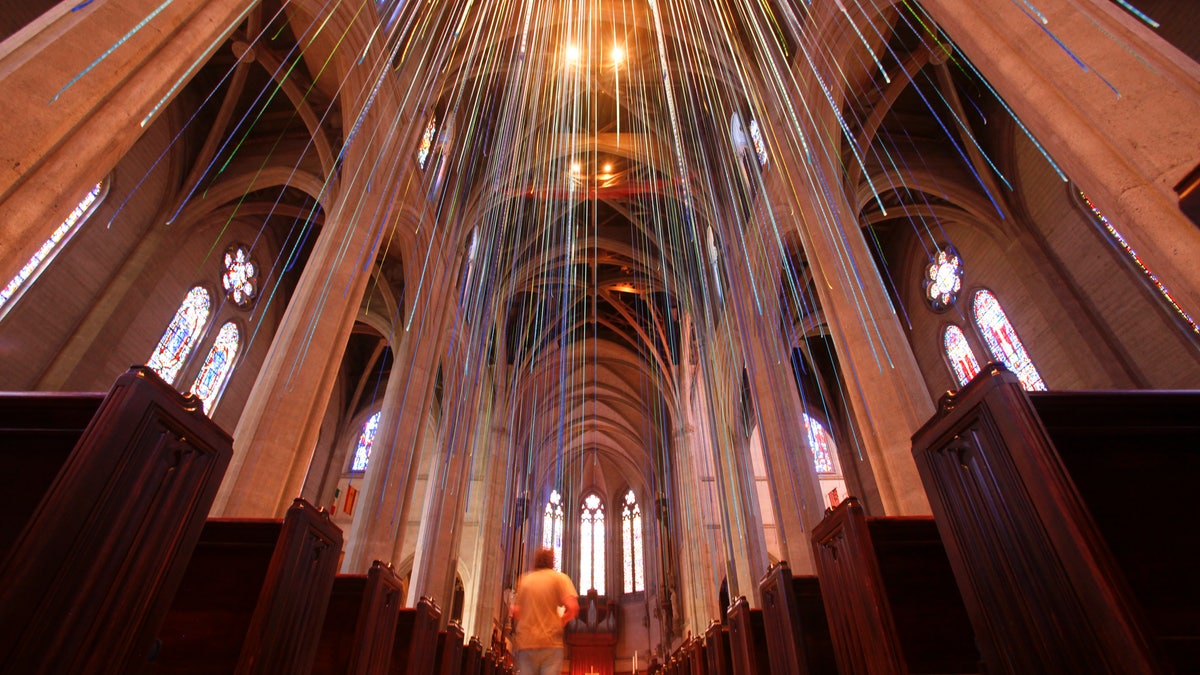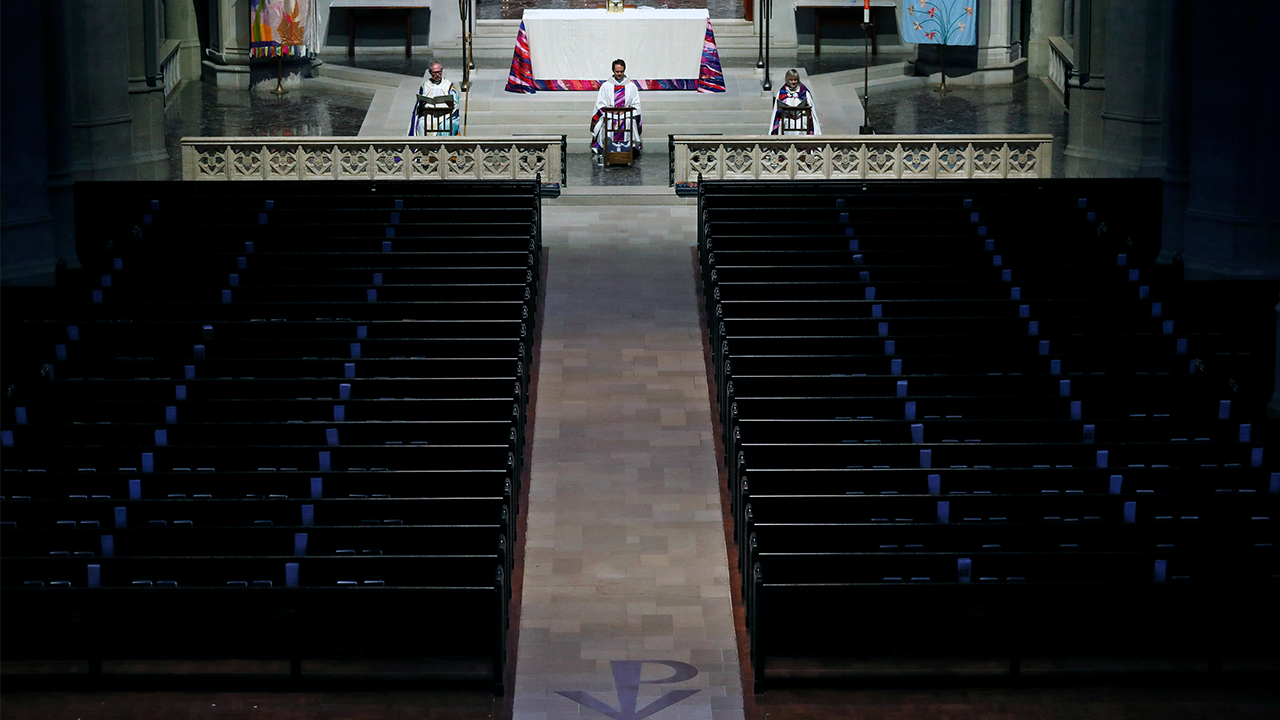A New York Times article praised the use of a nearly 100-year-old Christian cathedral as a space for mass yoga classes, drag shows and other new-age events as the “place to be” in San Francisco.
Heather Knight, the Times' San Francisco bureau chief, published a story about Grace Cathedral, a Gothic Episcopal church built in 1927 that has become popular in recent years for hosting extravagant community events and has attracted a congregation that is not as religious.
“But in recent years, it has experienced a boom for reasons that have nothing to do with the Bible,” Knight wrote, explaining that it attracts an unchurched crowd and has recently nearly doubled its normal congregation.
BISHOP GOES VIRAL FOR HIS REACTION TO THE OLYMPIC GAMES' 'CLEAR MOCKERY' OF THE LAST SUPPER: 'THE SEASON OF CHRISTIANITY HAS BEEN OPENED'
The interior of Grace Cathedral in San Francisco. (San Francisco Chronicle/Hearst Newspapers via Getty Images/Contributor)
According to a recent U.S. Census Bureau survey of household status conducted in March, San Francisco is the second least religious metropolitan area in the United States, behind Seattle. Sixty-three percent of adults in the city do not attend church or religious services, or attend less than once a year.
Knight wrote how in 2022, the cathedral created a program called “Grace Arts,” which she described as “a program designed like a museum membership that charges an annual fee in exchange for benefits including discounts on classes and events.”
Grace Arts events include twice-weekly yoga classes, concerts, and even drag shows and trapeze performances.
The journalist described one of the more eccentric events Grace Arts has ever hosted: “Others find community and joy at the cathedral by hosting monthly sound baths, where they huddle in their sleeping bags to listen to musicians play by candlelight.”
Since the cathedral began offering this program, Knight wrote, “Grace Arts members now outnumber regular church members.”
“About 820 households subscribe to Grace Arts, compared with 550 households that attend the church. Annual surveys show that the average age of a Grace participant has dropped from 63 to 40 in just two years, indicating that the new program is attracting a younger audience.”
THE MOST POPULAR CATHOLIC OUTSIDE THE VATICAN: BISHOP BARRON

In recent years, the church has gained new congregants excited to attend its new offerings of yoga classes, drag shows and other social events held at the church. (Mark Boster/Los Angeles Times via Getty Images)
Describing the appeal of yoga classes, for example, Knight wrote: “Kimberly Porter-Leite volunteers for the cathedral's twice-weekly yoga classes, sessions so popular she has to perform what she calls 'Tetris on the mat' to make sure everyone fits between the columns and benches.
The journalist noted that many of these new members are people who have moved away from traditional religion but are looking for a community.
She spoke to yoga instructor Darren Main, a gay person who “felt shamed by the Catholic Church,” who told her: “A lot of people here have left the church, not feeling particularly welcome or safe. But we still need a space where we can be together for some reason other than to discuss politics.”
Knight also highlighted a lesbian who volunteers at the classes, named Kimberly Porter-Leite. The author wrote: “She is not religious and is married to a woman she described as 'a recovering Catholic' who felt mistreated by the church for being a lesbian.”
“A cathedral was an unlikely place for her to spend her time, but she lives nearby and knew Grace had a reputation for being liberal and welcoming. In 2021, she tried a yoga class and was hooked,” Knight added.
CLICK HERE TO GET THE FOX NEWS APP
Grace Cathedral Dean the Rev. Malcolm Clemens Young told The Times he was “encouraged” by the diverse group of people who attend services, including agnostics and atheists.
“We always say that you can belong before you believe, or you can belong and never believe. There is a huge spiritual hunger. We will always look at the stars in wonder and always wonder why we are here,” he said.












